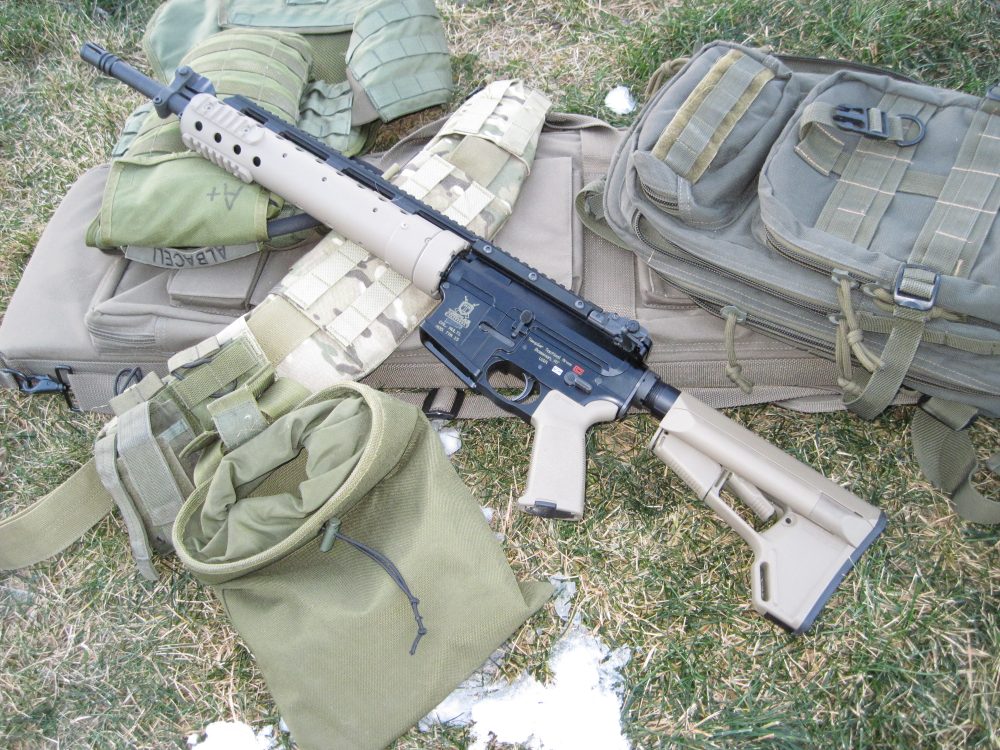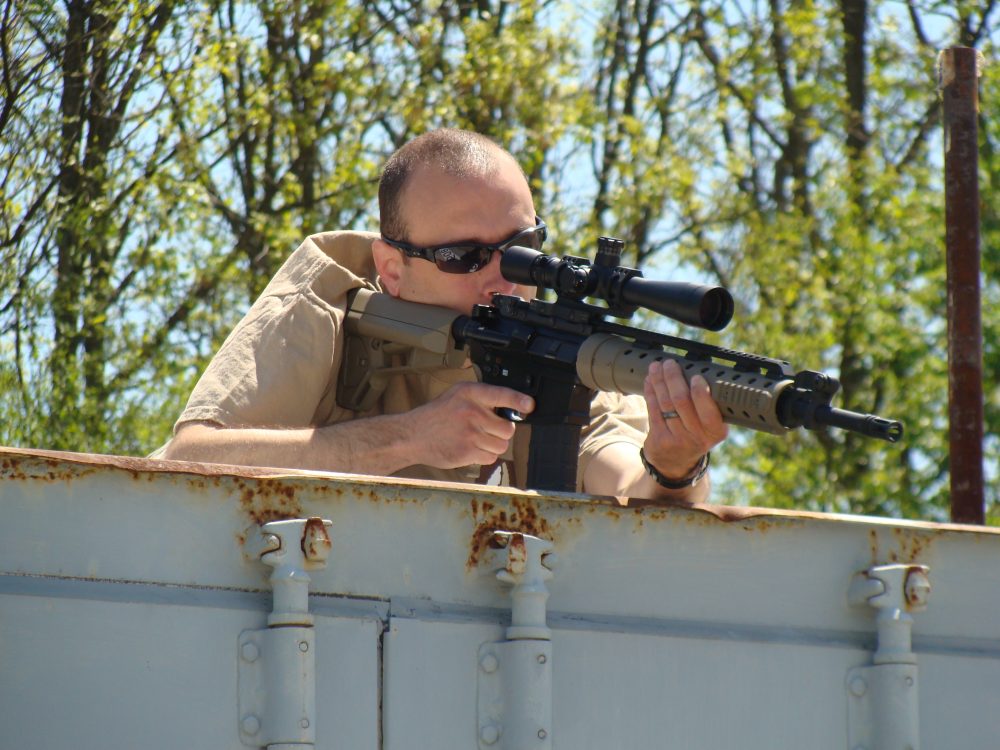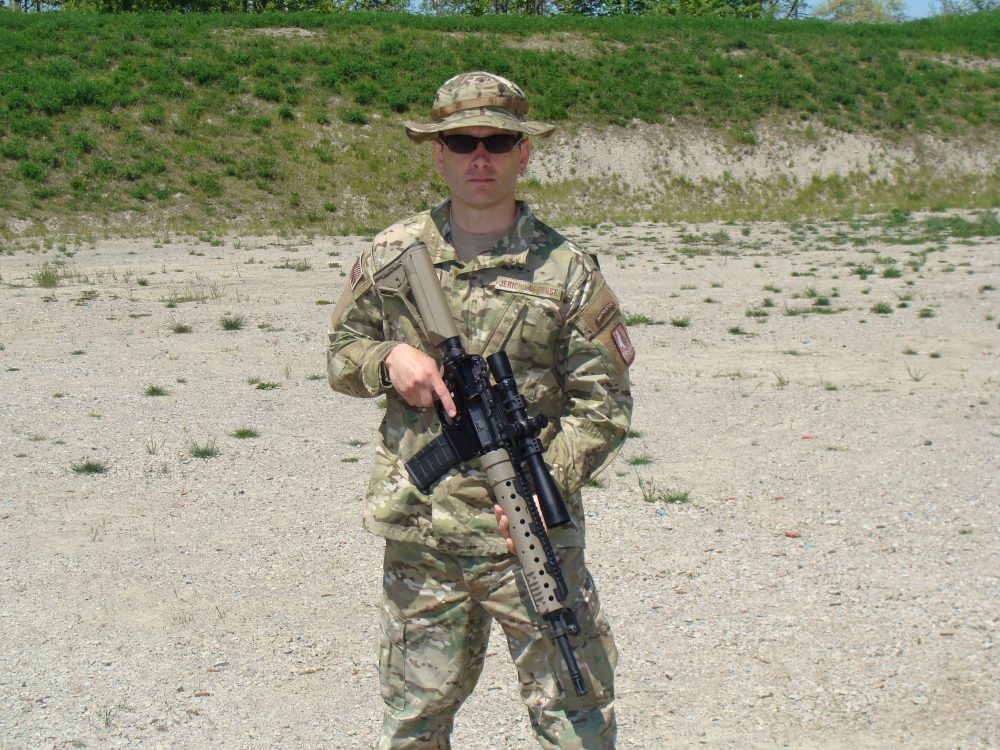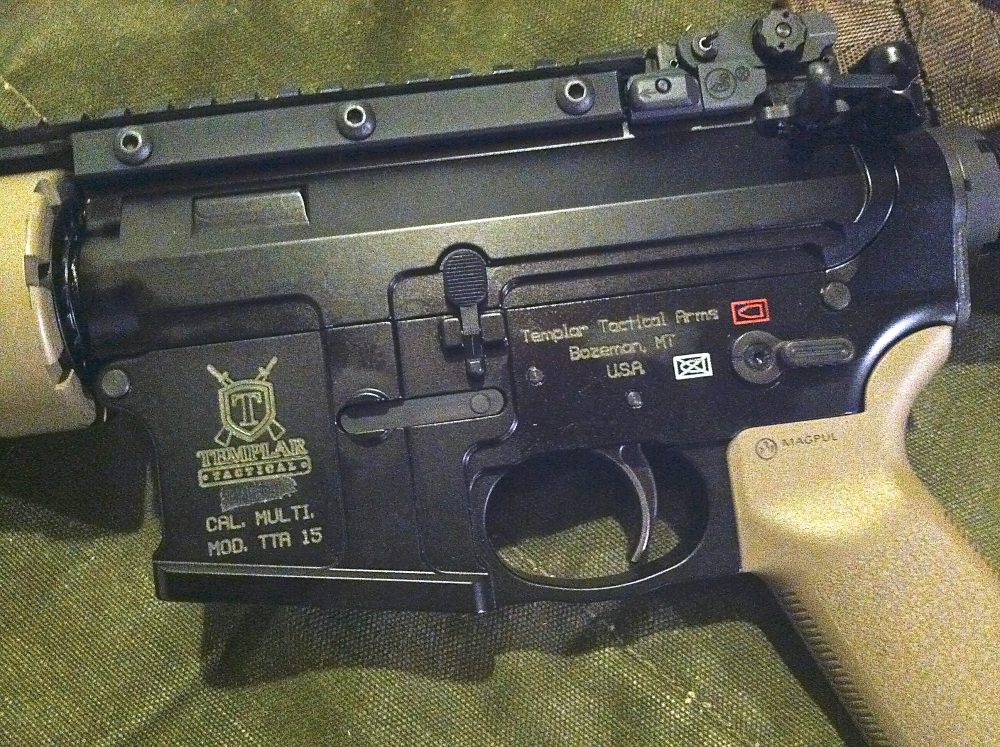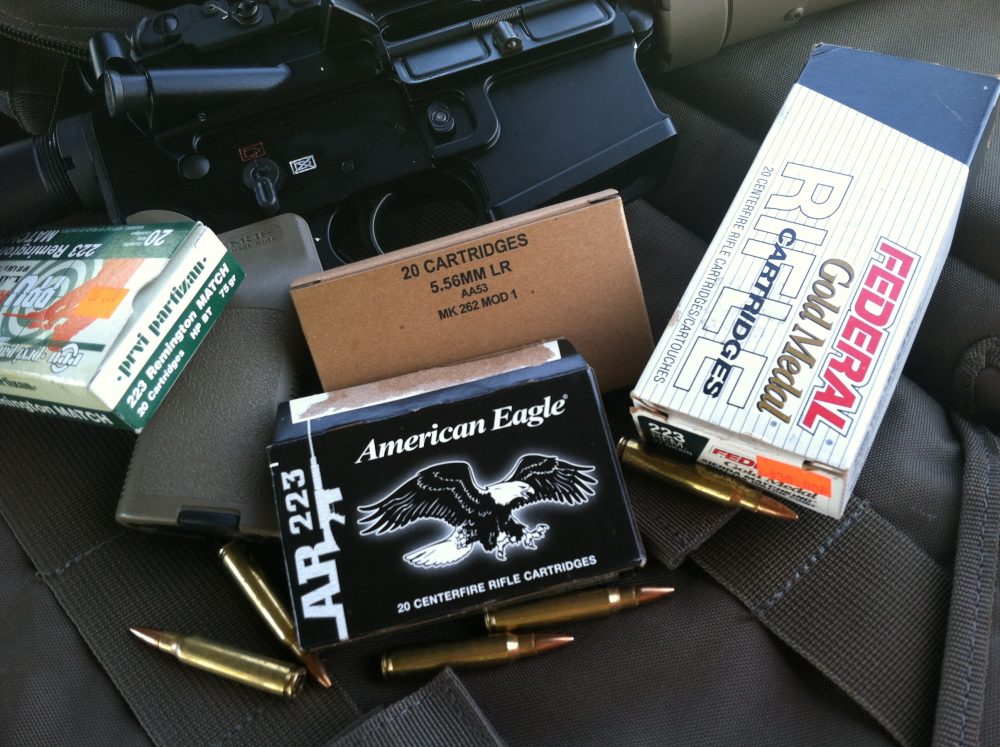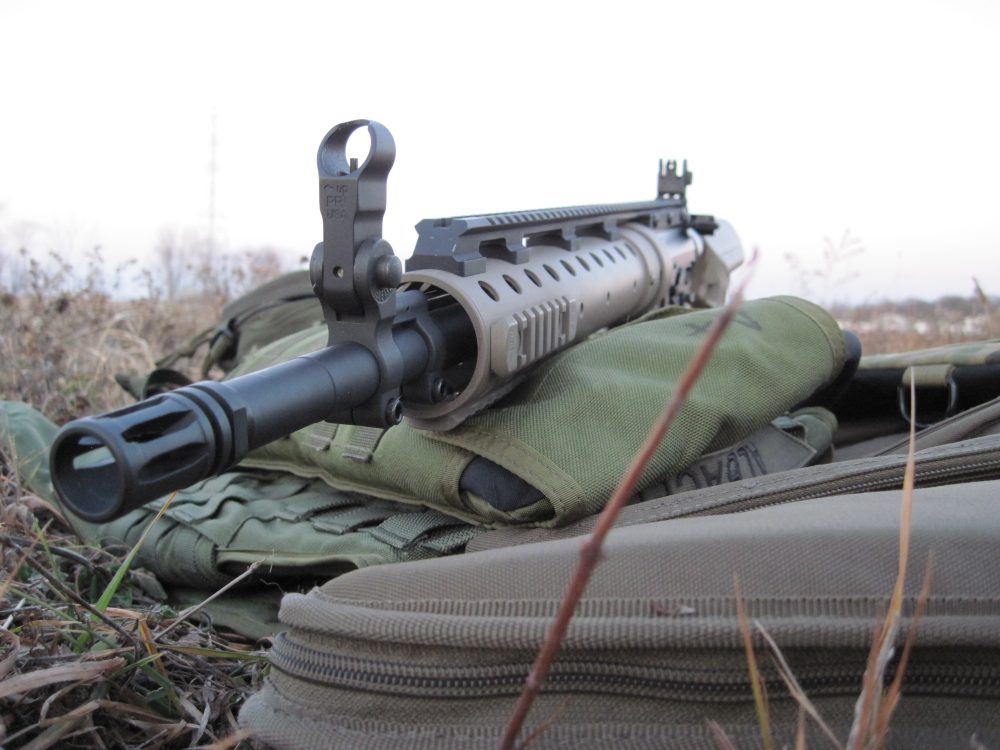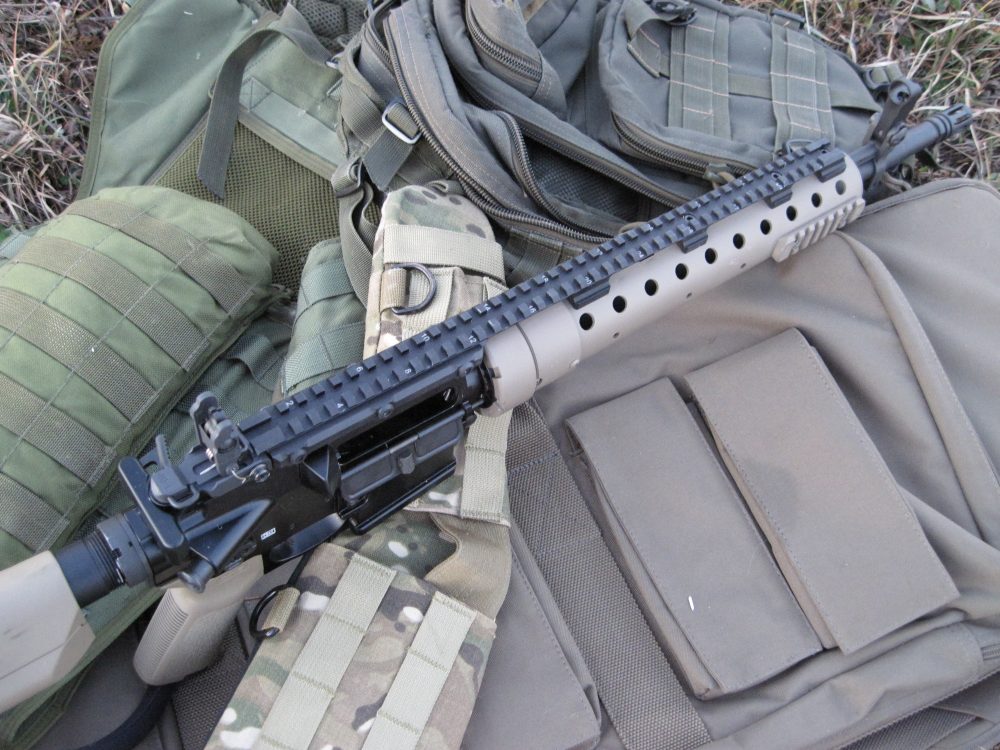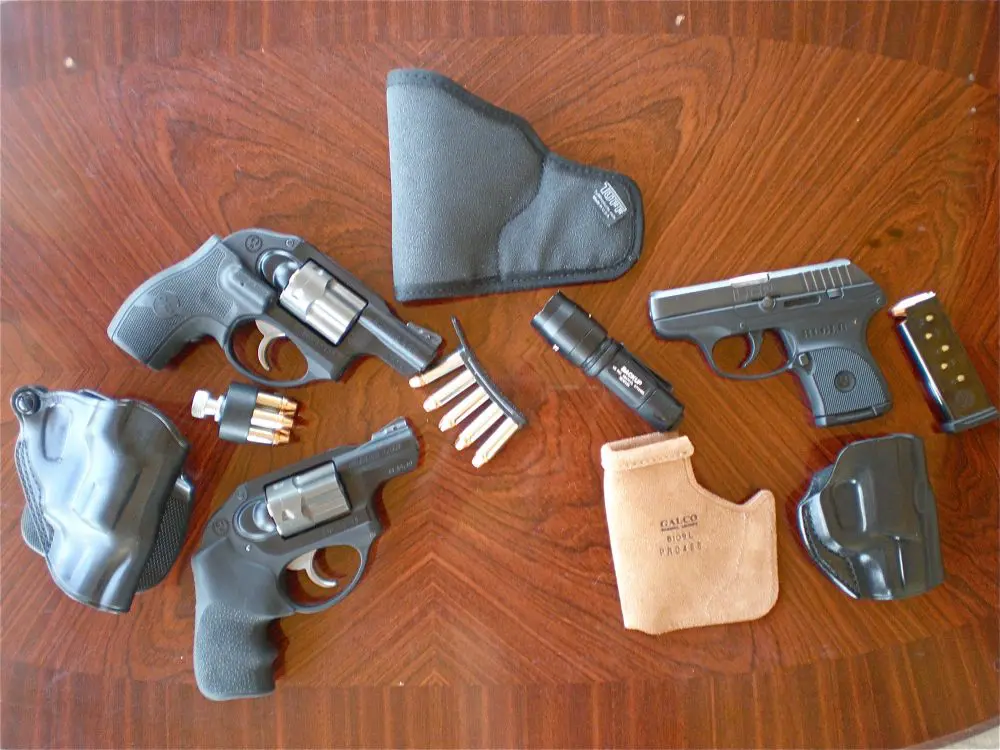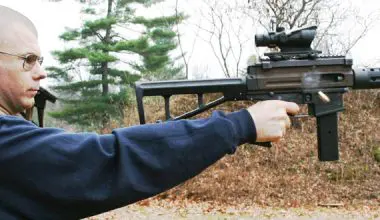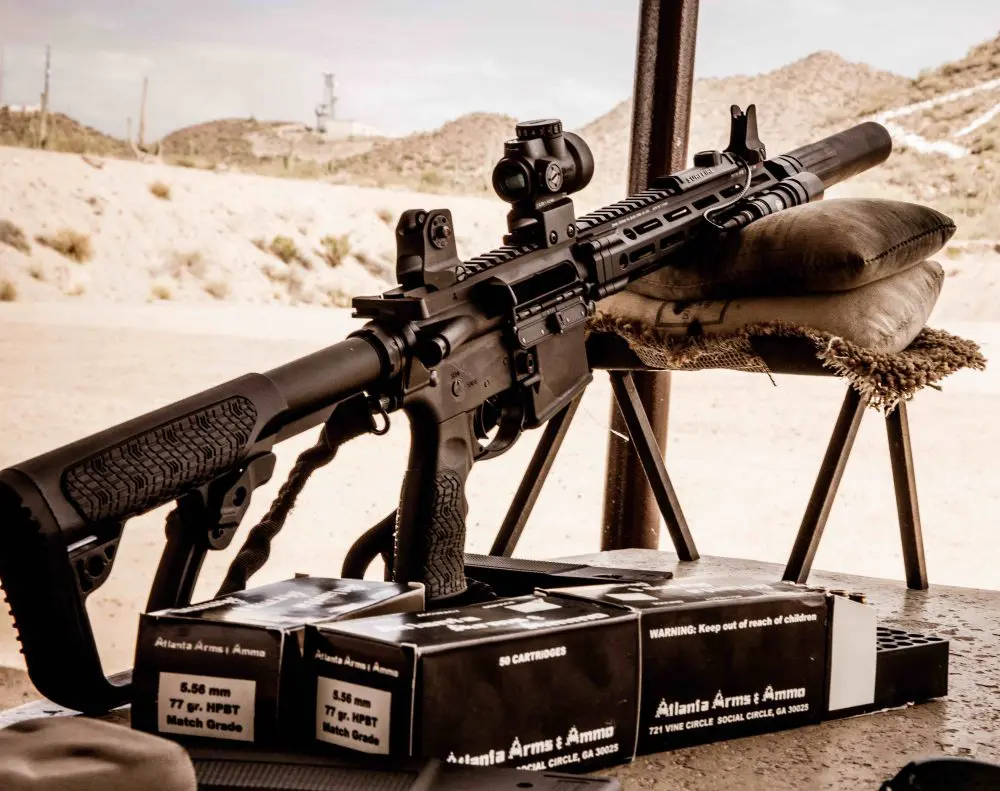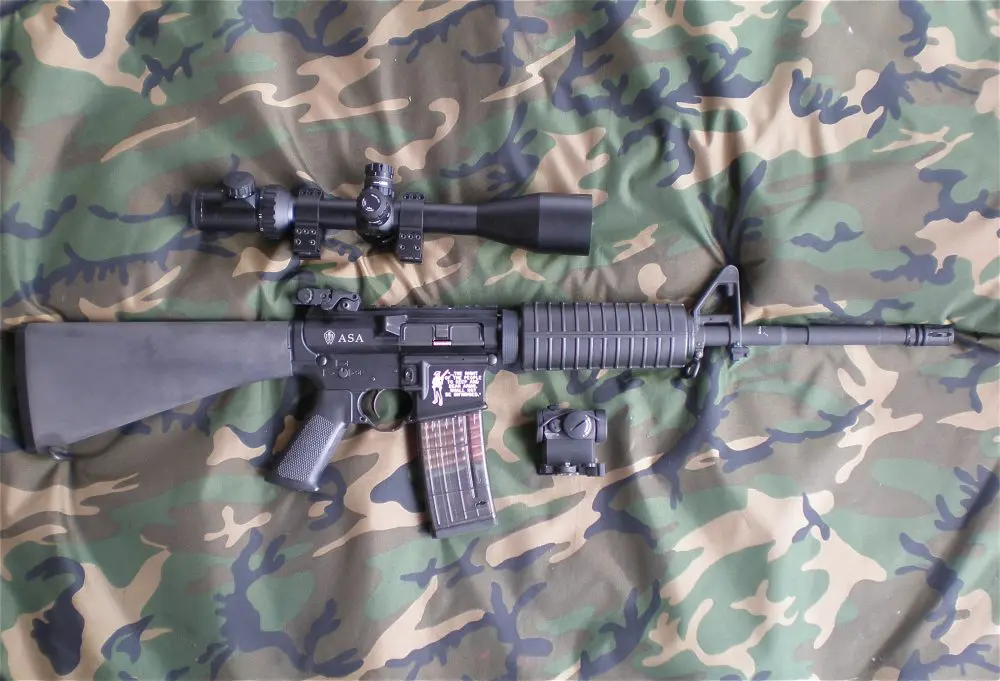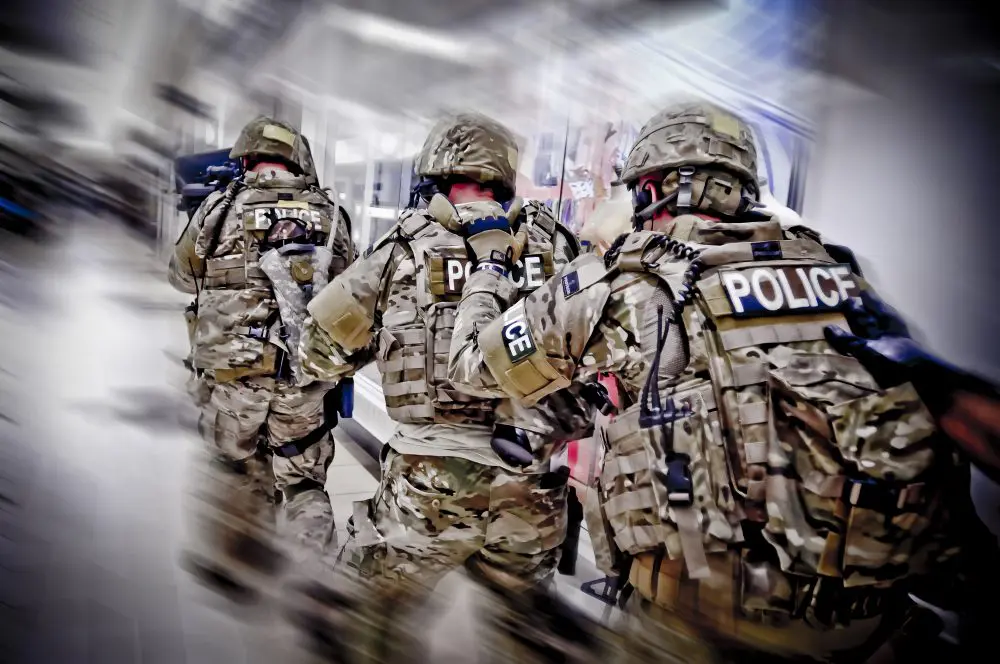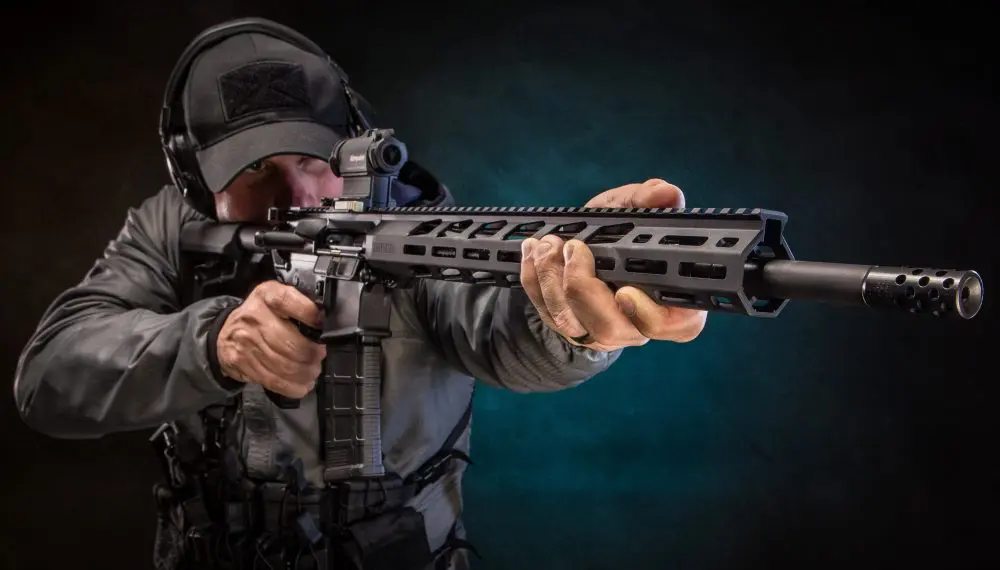Templar Tactical MK-12.
Certain terms in the gun industry are thrown around all too often. Tactical, sniper, Special Ops, milspec, the list goes on and on. So when I first heard of a new company going by the name Templar Tactical and offering an MK-12, I was skeptical. I only resisted the urge to dismiss them outright because they were being recommended to me by a pair of former Marines—one of whom I know very well and respect (we can forgive him for being a Marine, hooah?).
I agreed to take a closer look at the Templar Tactical MK-12. For those who don’t know, the MK-12 is an SPR, or Special Purpose Rifle. The Special Ops community uses many weapons that are tailored for their specific purposes. While the basic platform may be based on standard-issue weapons—in this case the M16—the final product usually looks and performs much differently than its antecedent.
Author takes aim from elevated position with Templar Tactical MK-12.
Table of Contents
LONE SURVIVOR
The MK-12 was made famous years ago when Internet reports surfaced of Navy SEALs using this specialized weapon. The reputation of the weapon peaked in 2007 with the publication of Lone Survivor, the story of the June 2005 Operation Red Wing and one of the worst Special Forces losses in American history.
In the moving factual account, author Marcus Luttrell mentions carrying an MK-12. Soon after, every Internet commando wanted an MK-12 for himself. Unfortunately, the MK-12 was probably obsolete by the time people first read about it.
If you have never read Lone Survivor, immediately go find a copy. Far more important than our love of weapons is our duty to carry on the herculean efforts of these fallen warriors in our hearts, minds and deeds. When you’re done reading, pass the book on to someone else. Piss off a liberal: give the book to their impressionable teenage kids.
Military-issue MK-12 is typically mounted with an optic similar to this Leupold 4-10 power Mark 4.
TEMPLAR TACTICAL MK-12
The Templar Tactical MK-12 is not intended to be an exact replica, just a close facsimile. Comparing their rifle with photos that I found, I would say in a basic sense the folks at Templar Tactical got it right. And they assured me this was a shooter, not a movie prop. I assembled several different types of ammunition and headed to the range.
My good friend Kurt Reifert of Centennial Company in Marine City, Michigan helped me with this evaluation. He loaned me a Leupold Mark 4 mil-dot scope, 4-10 power, to put atop the rifle. In order to provide some kind of performance comparison, I also brought another rifle to the range. Readers may recall a rifle I built and covered for S.W.A.T. magazine back in January 2010. I placed a similar Leupold scope atop my personal rifle and ran the same ammunition through both.
The Templar Tactical MK-12 has fully machined upper and lower 7075 billet receivers. It has a carbon fiber PRI forearm and PRI one-piece rail that mounts on the receiver and the forearm, providing a continuous rail along the top. It has an 18-inch heavy barrel with 1:8 twist and rifle-length gas system. The trigger is a single stage competition trigger that measured four pounds. By comparison, my personal rifle has a 16-inch Noveske heavy barrel with 1:7 twist, mid-length gas system, Vltor one-piece upper, and military-style trigger.
So we’re not comparing apples to apples, just high-end ARs with twist rates that are tighter than typical commercial barrels. Tighter twist rates (when the second number is lower) help stabilize heavier match-grade bullets.
Close-up of fully machined 7075 upper and lower on MK-12.
MK-262 AMMUNITION
There were absolutely no failures of any kind with the Templar Tactical MK-12. It ate everything I gave it—and some of it was questionable. I was mostly interested in how each rifle would perform with MK-262 ammunition. This ammunition is supposedly what the military-issue MK-12 is designed to eat.
MK-262 ammunition is not easy to come by, so I was careful how I used it. I fired just about every other type of ammo first, just to make sure I was settled in and shooting comfortably before firing the good stuff. It didn’t occur to me until later that I may have reduced the accuracy of the weapon by putting some garbage ammo through it, but honestly I don’t think that was a factor. I loaded a five-round magazine with the MK-262 ammunition and sent those rounds downrange five times through the Templar Tactical MK-12. Then I ran the same types of ammunition through my personal AR, including some of the MK-262.
At first, I wasn’t really impressed. Sure, most of the three-round groups were measuring .5 inch at 100 meters, but the five-round groups seemed unimpressive. I guess I had high expectations. Maybe too high. When I didn’t burn one ragged hole, I wondered if it were the rifle or me. I went home and measured each group with my calipers and started changing my tune.
With any rifle, there is going to be some variation. Even with my hand loads, I might have variation in group size from one batch to the next. Lots of things can influence group size, including heat, ammunition and powder types, cleanliness of the bore—and the shooter!
This is just as true in my 16-inch barreled Vltor rifle, perhaps more so due to the shorter barrel. I’m not talking about a ton of variation, mind you, just some.
How much variation would you expect out of a quality AR? Maybe an eighth to a quarter MOA? That’s what I saw from my personal rifle, and I didn’t think that was anything out of the ordinary.
Variety of ammunition was used in testing MK-12.
CONSISTENCY
Here are the measurements for the five groups I shot with the Templar Tactical MK-12 with MK-262 at a distance of 100 meters: 1.06, 1.05, 1.04, 1.05, and 1.05 inches. After I read these numbers, I measured each group again with a Mitutoyo digital caliper. Each time I measured, I got the same results. When I compared that with the groups from my commercially bought Federal Gold Medal Match 77-grain HPBT, I once again got groups that varied by no more than .02 inch. Apparently this rifle really likes MK-262 and FGMM.
My own rifle favors lighter weight bullets—especially 69 grainers—and printed .91- to 1.29-inch groups with the heavier weight MK-262s.
The kind of consistency shown by the Templar Tactical MK-12 is simply incredible, especially since factory ammunition—even high-quality ammunition—typically shows more variance than that. It would be nice to shoot sub-MOA, but I would rather shoot consistent groups than shoot an occasional tight group followed by a lesser group.
Besides, I am sure you could hand-load something that would be a better all-around performer for the MK-12. Keep in mind that the Templar Tactical MK-12 is not designed to shoot MK-262—the service weapon is. According to Templar Tactical’s website, the recommended ammunition for their MK-12 is Black Hills 77-grain HPBT factory rounds, of which I had precisely none.
Iron sights included on MK-12 were of very high quality. Author prefers shrouded front sights over standard M16-type sights.
COMPARISON
So the folks at Templar Tactical build a better rifle than I can put together. What’s new, right? Well, the purpose of the comparison was only to provide a benchmark for measuring success, and the folks at Templar Tactical did a great job. My own feeling toward the MK-12 platform is that the technology is obsolete. I feel the same way about the rifle I built two years ago.
Just weighing the two rifles revealed the MK-12 being a full pound heavier than the Vltor. Yes, the Templar rifle does have a two-inch longer barrel, but the Vltor upper is one big chunk of aluminum with four full-length rails. Manufacturers are already using lighter weight designs with bolt-on rails, so you can add as little or as many accessories as the mission dictates.
The MK-12 has bolt-on rails with the carbon fiber PRI forearm, but the weight of the forearm’s sizable barrel nut and the weight of that one-piece top rail not only cancel the weight savings of the PRI forearm, but actually make it heavier than the Vltor.
Top rail and barrel nut on forearm add a considerable amount of weight over newer designs.
SUMMARY
Let’s call this what it really is: a supremely built rifle following a design that may be a little long in the tooth but is marketed toward those who want an AR that is patterned after a real Navy SEAL’s weapon.
It’s marketing genius, really. Build a rifle that will be popular, and then follow up with newer, more advanced versions of the AR platform.You only have to look on Templar Tactical’s website to see what they have in store for us in the near future. As of this writing, they are showing a prototype AR in 7.62x51mm. This company knows how to build a rifle, and I expect you’ll be seeing much more of them in the pages of S.W.A.T. soon.
SOURCE:
Templar Tactical Arms
(406) 579-4612
www.templartacticalarms.com
